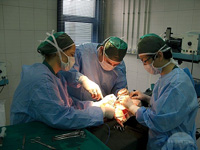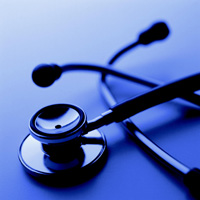|
|
|
|
|
|
|
|
|
::::::: CE - Marking << Back | Next >> MEDICAL DEVICE DIRECTIVE (MDD) 93/42/EEC
Classes Class I- Devices low risk devices. The devices are non-evasive, non active, non sterile, non powered, non measuring and do not penetrate into the body. The manufacturer must complete a technical file. Class IIa- Devices low-medium risk devices such as a hearing-aid. Devices that are within the body between 60 minutes and 30 days fall within this class. This class also warrants technical files as well as having a European Notified Body perform a conformity test. Class IIb- Devices are medium-high risk. The devices in this class are in the body more than 30 days. Examples include ventilators and intensive care monitoring equipment. Compliance route is the same as Class IIa with an additional step of type examination of the device by the European Notified Body. Class III- These are high-risk devices. Some examples are balloon catheters and prosthetic heart valves. The steps to approval are audit of the full quality assurance system and examination of the design by the European Notified Body examination and testing of the device. Contact us for further assistance. |
|
|
|
|
|
|
|
|
|
|
|
|
|
|
|
|
|
|
|
|
|

|








 MDD 93/42/EEC (Medical Device Directive) has been in place since
June 14, 1998. It was amended on September 5, 2007. The consolidated
directive will become mandatory on March 21, 2010. The directive
establishes essential requirements and harmonized standards for the
manufacture, design, and packaging of medical devices. A medical
device is defined as any instrument, apparatus, appliance, software,
material or other article.
MDD 93/42/EEC (Medical Device Directive) has been in place since
June 14, 1998. It was amended on September 5, 2007. The consolidated
directive will become mandatory on March 21, 2010. The directive
establishes essential requirements and harmonized standards for the
manufacture, design, and packaging of medical devices. A medical
device is defined as any instrument, apparatus, appliance, software,
material or other article. The MDD 93/42/EEC has recently been amended. The 2007/47/EC
amendment was established on September 5, 2007 and the consolidated
directive will be mandatory on March 21, 2010. The amendment is
necessary due to continual advancements in technology and
development of international initiatives. The Commission is to
constantly analyze the directives in order to ensure the protection
of the patients. The amendment has such changes as the definition of
a medical device, things which are not considered a medical device,
explanation of Member State’s role, etc.
The MDD 93/42/EEC has recently been amended. The 2007/47/EC
amendment was established on September 5, 2007 and the consolidated
directive will be mandatory on March 21, 2010. The amendment is
necessary due to continual advancements in technology and
development of international initiatives. The Commission is to
constantly analyze the directives in order to ensure the protection
of the patients. The amendment has such changes as the definition of
a medical device, things which are not considered a medical device,
explanation of Member State’s role, etc.